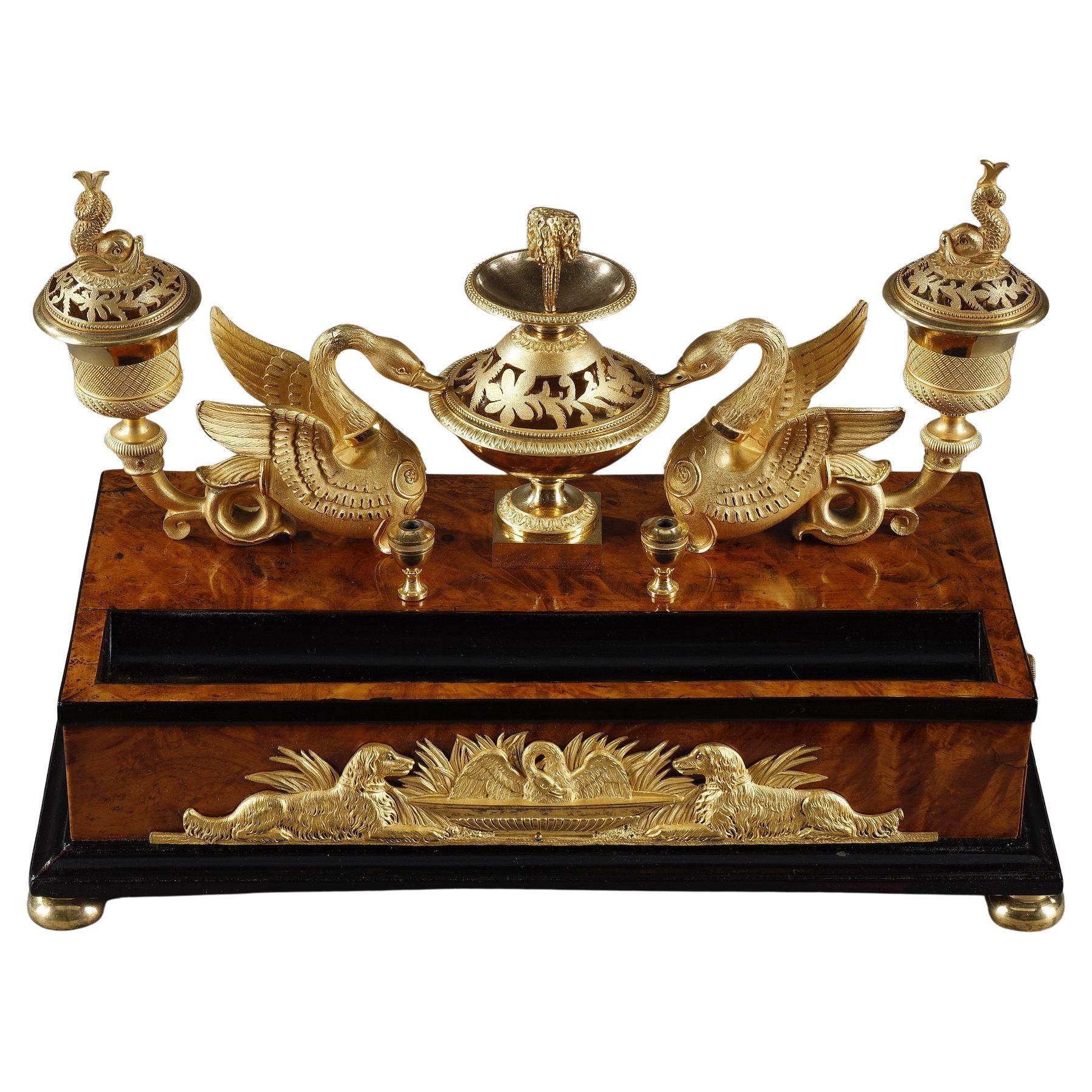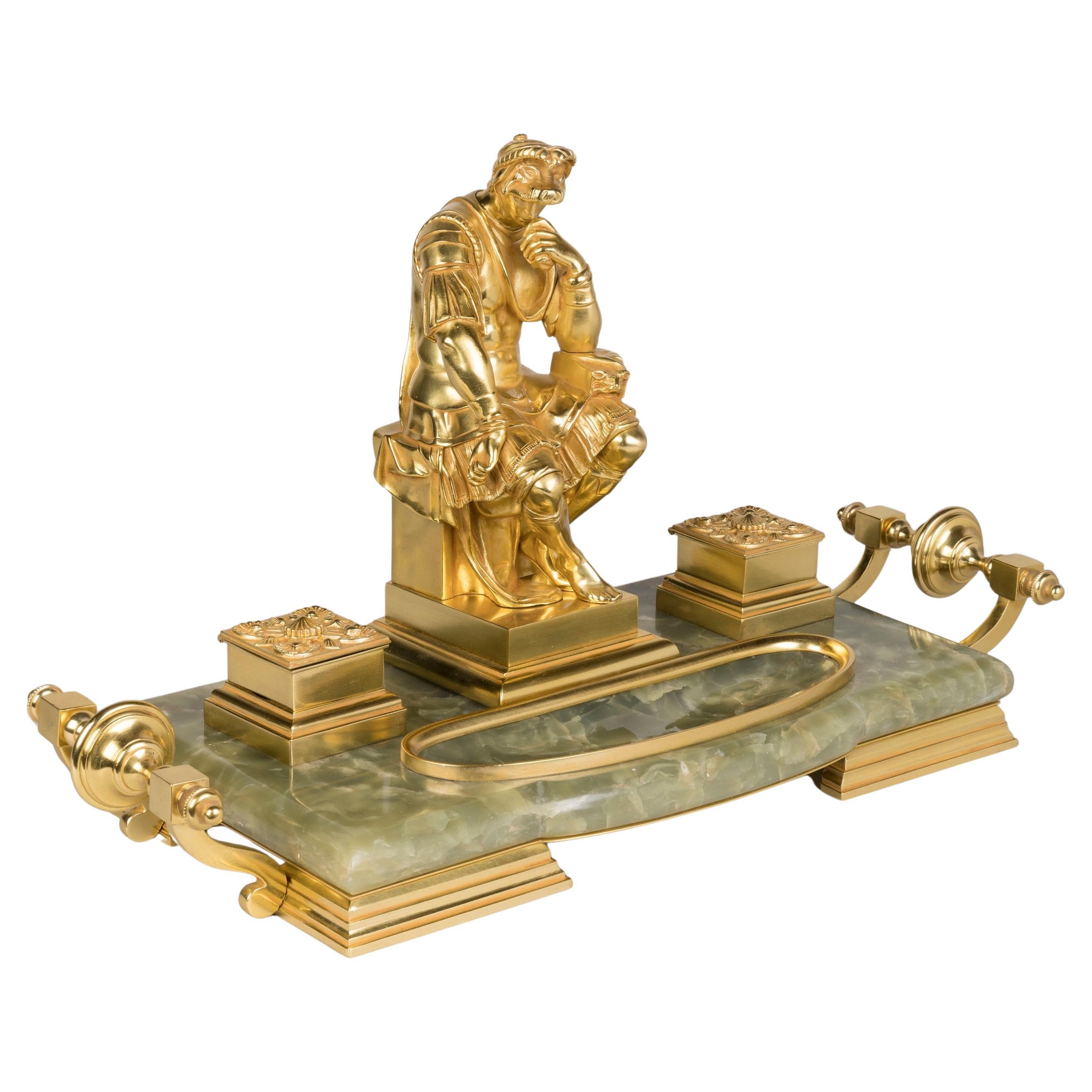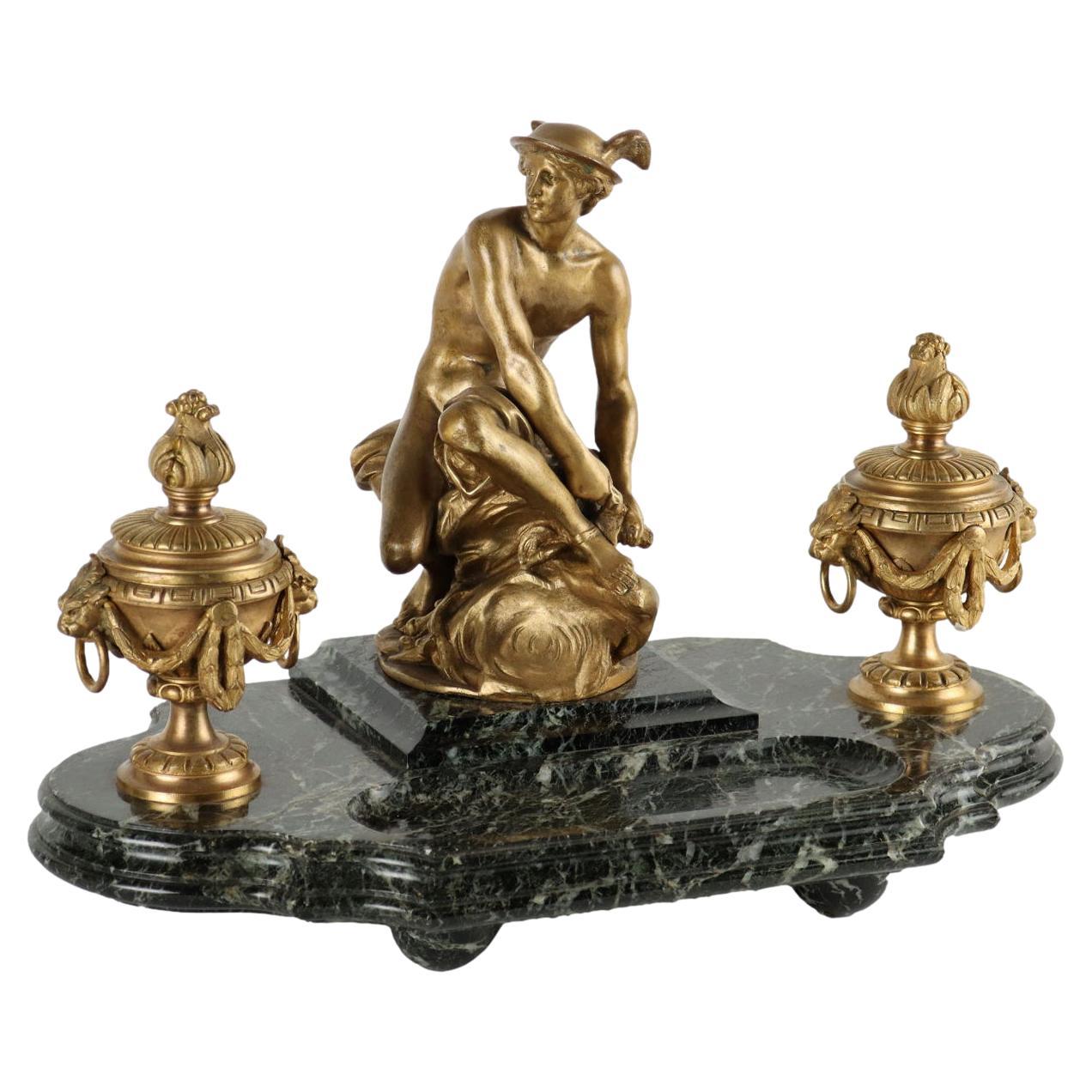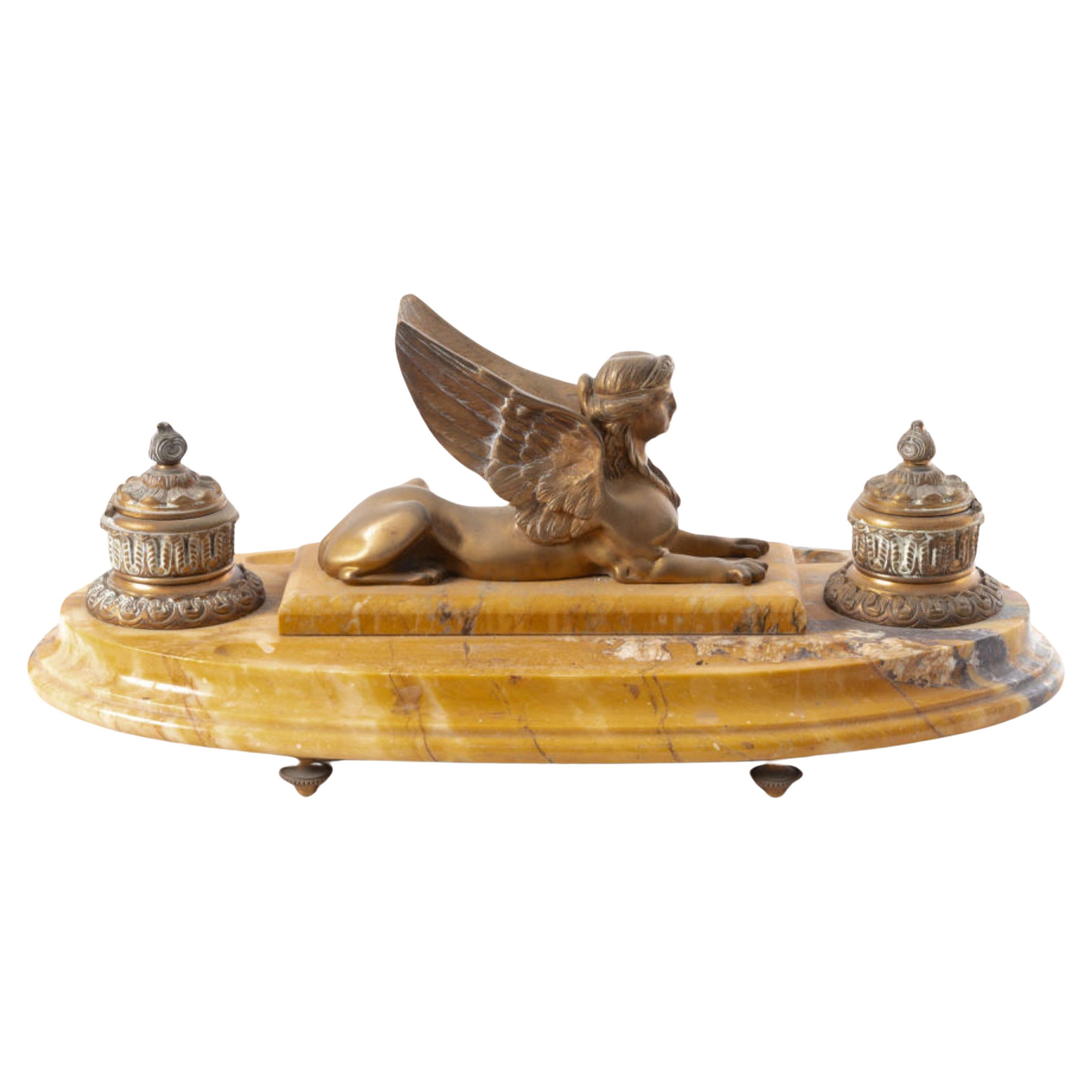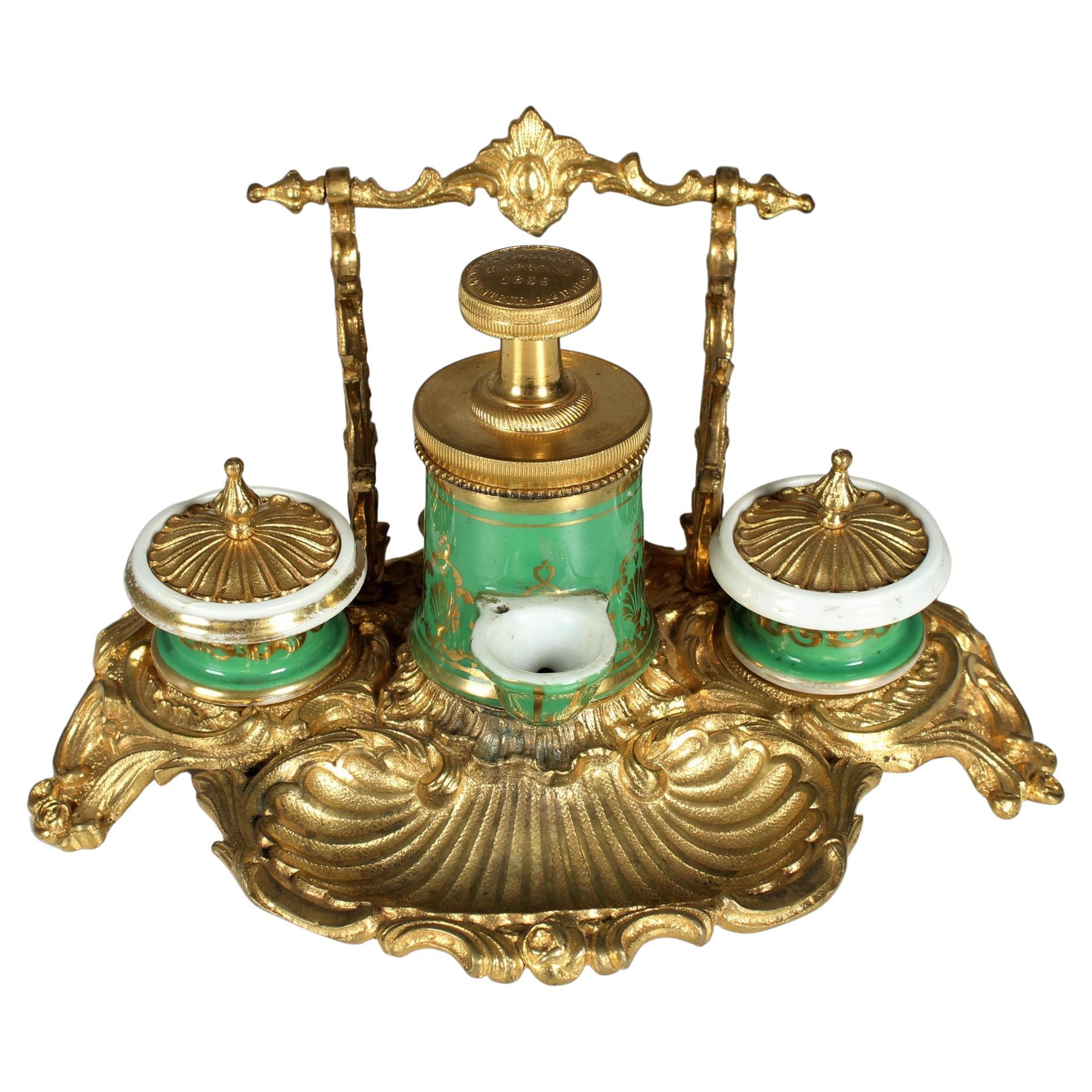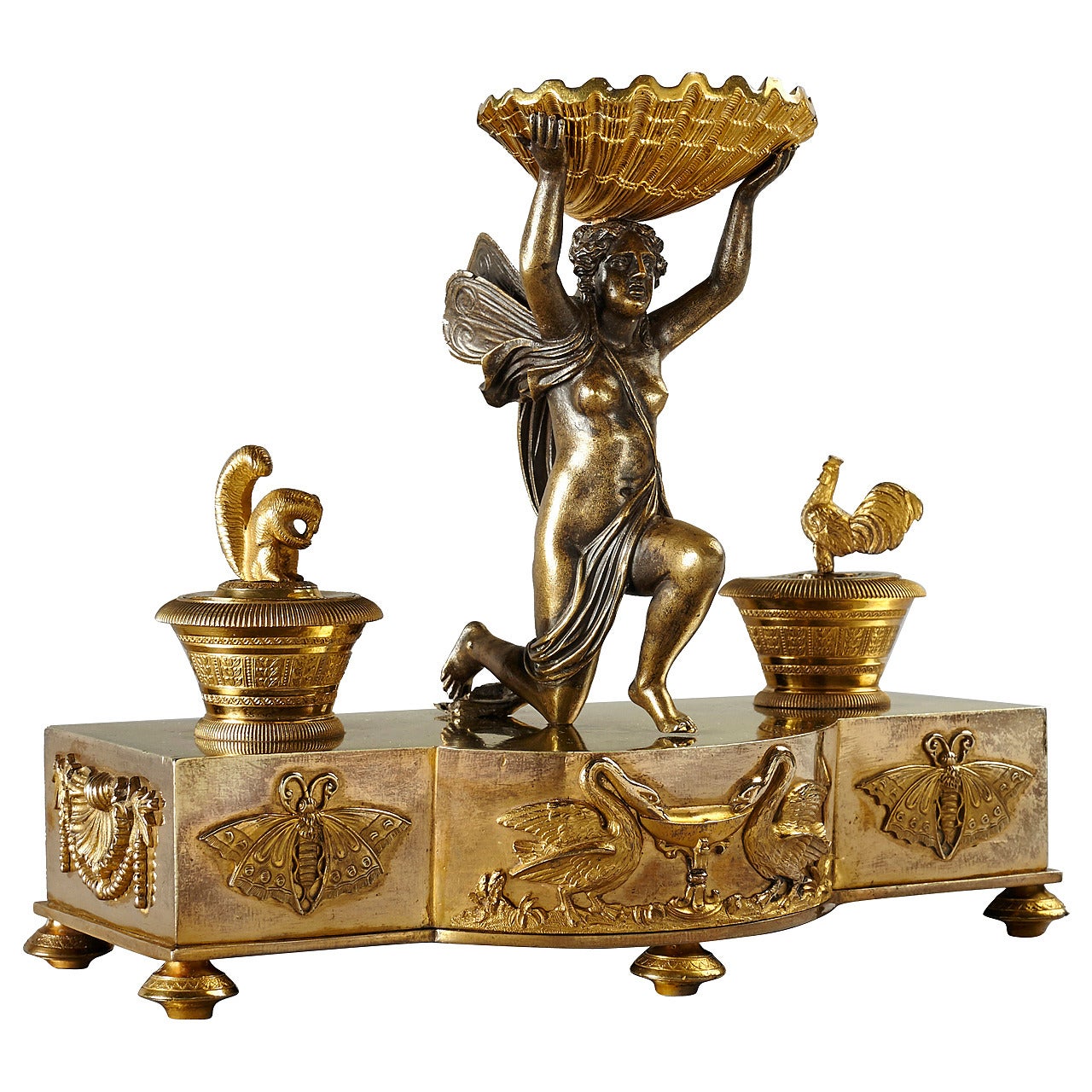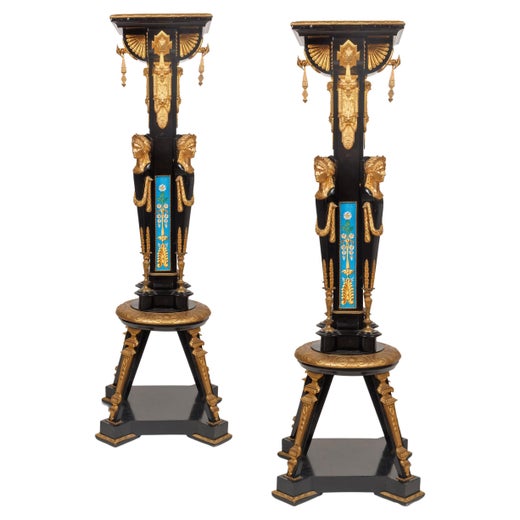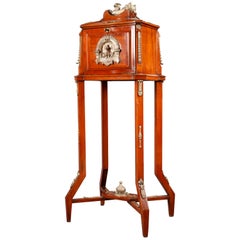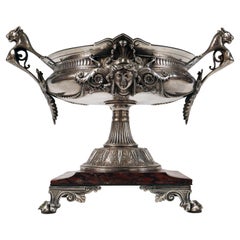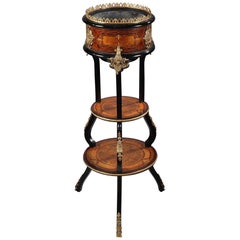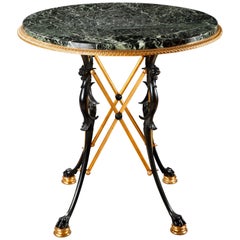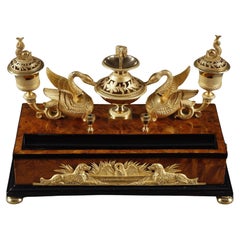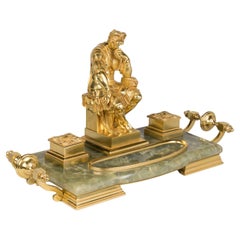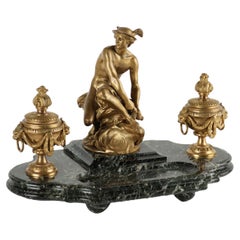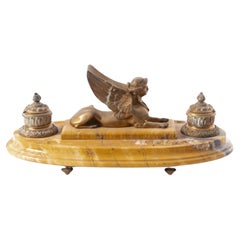Neo-Greek Inkwell by C.G. Diehl, E. Frémiet and J. Brandely, France, Circa 1867
About the Item
- Creator:
- Dimensions:Height: 17.72 in (45 cm)Width: 19.69 in (50 cm)Depth: 9.06 in (23 cm)
- Style:Greek Revival (In the Style Of)
- Materials and Techniques:
- Place of Origin:
- Period:
- Date of Manufacture:circa 1867
- Condition:Wear consistent with age and use.
- Seller Location:PARIS, FR
- Reference Number:Seller: 1307/421stDibs: LU3860312730271
Emmanuel Fremiet
Charles-Guillaume Diehl
Charles-Guillaume Diehl founded his cabinet making and decoration firm at 19 Rue Michel-Le-Comte in 1885. His workshops produced elegant little pieces of furniture in rosewood and thuja and novelties with bronze and porcelain embellishments. It was his luxury boxes, however, (liqueur cellarettes, cigar cabinets, games boxes, cashmere cases, jewelry cases) which assured Diehl’s renown. Already rewarded with a bronze medal at the Universal Exhibition of 1855 in Paris, he exhibited a jardinière with china columns and a liqueur cabinet at the Industrial Arts Exhibition in 1861. In collaboration with the designer Jean Brandely (active from 1867 until 1873), Diehl renovated his decorative repertory and created astonishing pieces of furniture in the Grecian style, which had a dazzling success at the Universal Exhibition in Paris in 1867, where his cabinets also won a silver medal. Certain motifs were so typical of Diehl’s work that they received extensive commentary by the art critic J. Mesnard in his book “Les Merveilles de l’Exposition Universal de 1867”. He writes of a table of which “the pendant bearing hooks and the fan-shaped radiating motif which ornaments the entablature are engraved with love” and a jewelry case where “The head in fine Grecian style makes up the essential part of the fine gilt bronze ornamentation”. For this Universal Exhibition, Diehl also formed a partnership with two famous sculptors: Emile Guillemin (1841–1907), who carved the relief for a mahogany sideboard with galvanic gilt bronzes and Emmanuel Frémiet (1824–1910), who executed the low relief for a cedar medal cabinet with marquetry and silver-plated bronzes. Diehl was again rewarded with a medal of honor at the Union Central Exhibition of 1869 and a progress medal at the Universal Exhibition in Vienna in 1873. Showered with praise by the critics, Diehl is considered one of the most innovative artists of the 19th century. His final appearance was at the 1878 Universal Exhibition in Paris, where he presented outside the competition, his most recent creations, including a work table in marquetry, which with its naturalistic grasshopper motif anticipated Art Nouveau.
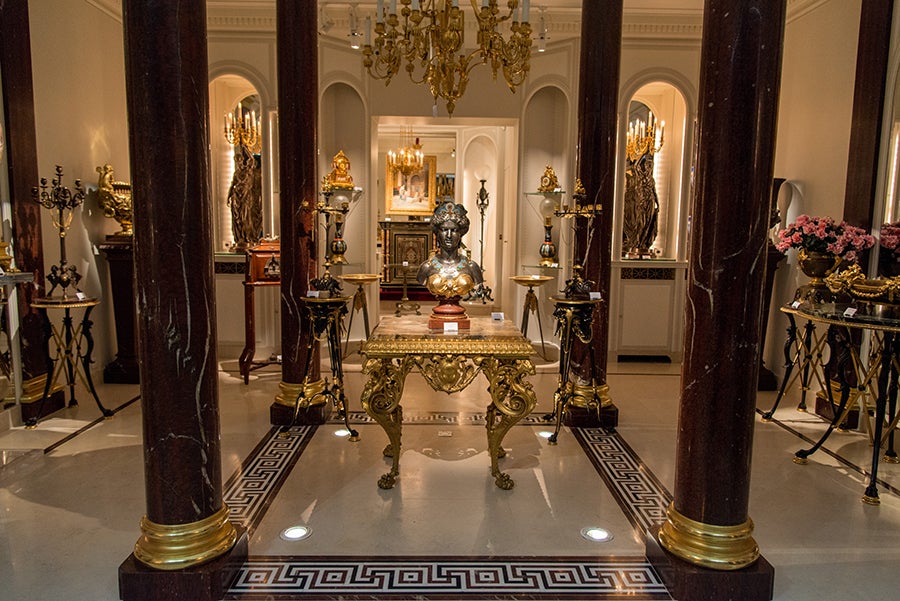
- ShippingRetrieving quote...Shipping from: PARIS, France
- Return Policy
More From This Seller
View AllAntique 1860s French Greek Revival Tobacco Accessories
Brass, Bronze
Antique 1880s French Greek Revival Decorative Bowls
Griotte Marble, Bronze
Antique 1870s French Greek Revival Planters and Jardinieres
Bronze
Antique 1880s French Greek Revival Center Tables
Marble, Bronze
Antique 1860s French Greek Revival Table Clocks and Desk Clocks
Bronze
Antique 1880s French Louis XVI Desks and Writing Tables
Bronze
You May Also Like
Antique 1810s French Empire Inkwells
Bronze
Antique 19th Century French Renaissance Revival Inkwells
Onyx, Ormolu
Antique 19th Century French Other Inkwells
Marble, Bronze
Early 20th Century French Napoleon III Inkwells
Marble
Antique Mid-19th Century French Napoleon III Inkwells
Bronze
Antique Early 19th Century Russian Empire Inkwells
Bronze
